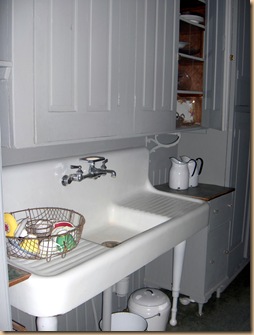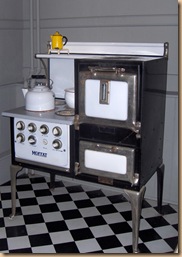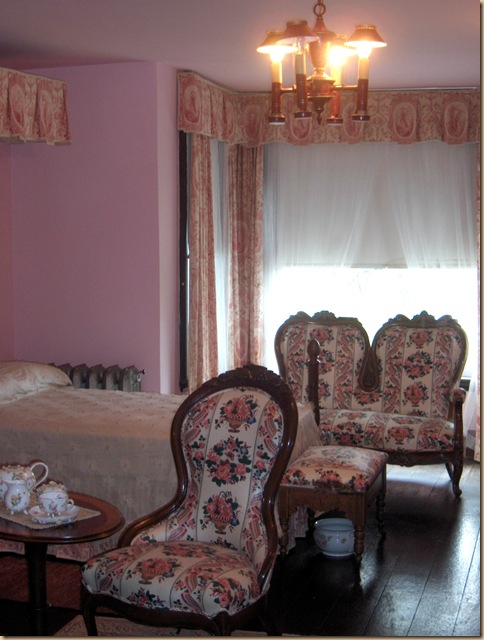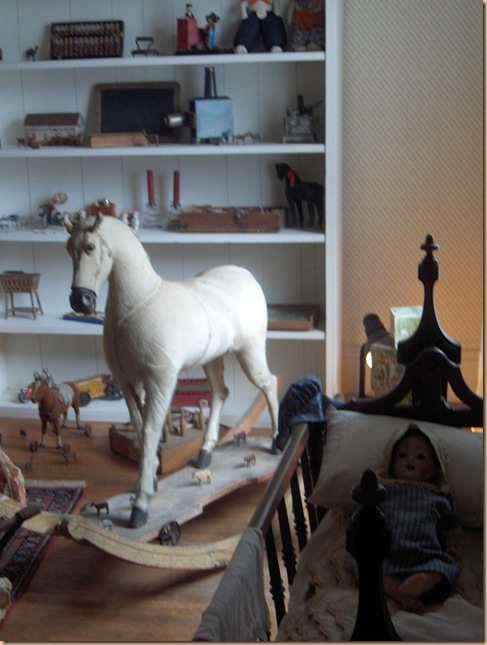Eldon House is the oldest surviving private residence (now museum) in London, Ontario. It was built in 1834 and housed 4 generations of the Harris family. During its prime, Eldon House was very much the centre of the London social and cultural scene. In 1960, surviving members of the family (the great grandchildren of John and Amelia Harris, the original owners) donated the house, most of its furnishings, and the 11 acres of land they owned to the city for use as a museum and a park.
This past Sunday, I attended a lecture in the Interpretive Centre at Eldon House by Roxanne Lutz and Alex Chartrand on the story of the Eldon House ghost, followed by a tour of the house. This lecture is part of an ongoing series at the Interpretive Centre and admission to these lectures is by donation.
This nearly 10,000 square foot Georgian style house was built in 1834 with an addition being built in 1877. It now displays items from various time periods including Victorian (1837-1901), Edwardian (1901-1910), and the early 2oth century. The Harris family was very involved in the local London community and many of them kept quite detailed diaries which have been an excellent source of information about early London life.
The veranda
There are a few variations on the ghost story of Eldon House, but the one I will retell here is based on the research of Roxanne Lutz and Alex Chartrand. Questions about the accounts of this story remain but their research seems to be the most comprehensive and most accurate (accurate not necessarily in terms of whether ghosts exist or not but accurate in its retelling of what was observed).
Although this was the residence of the Harris family, it was named Eldon House after the Earl of Eldon, Lord High Chancellor of England, a man much admired by John Harris. John Harris, originally from England, had been stationed in Canada during the War of 1812. He retired from the Royal British Navy and settled in London, having been given the appointment of Treasurer of London district.
The library
On Friday, May 14, 1841 a ball was being held by the Harris family and as usual, the guests included family, friends, and members of the garrison. One of the invited guests was Lieutenant Wenman Wynniatt of the 83rd Regiment. Wynniatt, an accomplished horseman, had been in a steeplechase race at the Newmarket Racetrack (now the corner of Trafalgar and Highbury) attended by Sarah Harris, daughter of John and Amelia Harris. Prior to the start of the race, Wynniatt, upon seeing the rose she was carrying, suggested that it be given as a prize to the winner of the race. Wynniatt won the race and placed the rose in the buttonhole of his jacket. He asked for an additional prize of several dances with Sarah at the upcoming Eldon House ball and she agreed.
Trophies and artifacts brought back from Africa by Ronald Harris, grandson of John and Amelia Harris, who served as a mining engineer in Africa for 5 years.
The kitchen and butler’s pantry
The kitchen and butler’s pantry
At the ball, Sarah was standing with three men from the garrison, saying she was somewhat miffed at the fact that Wynniatt was so late and had not yet shown up to the ball. Apparently, she was not dancing, as she was still saving those dances she had promised to Wynniatt. At 10:15 pm, Wenman Wynniatt entered the library (being used as the ballroom that night) and looked directly at Sarah, saying nothing and then proceeded into the dining room. He was dressed in ordinary evening dress. It is said that not only was he seen by Sarah and the three soldiers but by Sarah’s mother Amelia as well. Sarah commented, laughingly, to the gentlemen she was standing with that Wynniatt was quite rude for not only having been late but for not speaking with her as well. She followed him into the dining room but once in there he was nowhere to be found. He had simply disappeared.
The kitchen
The kitchen
Once Wynniatt disappeared, he was never seen again. On the Sunday morning following the ball, John Harris asked his daughter Sarah if she had seen Wynniatt at the ball. She replied that yes indeed she had, at which time he told her that earlier that morning, Wynniatt’s body had been found in the Thames river. Evidence seems to suggest that he was fording a shallow portion of the river on his horse when he fell and hit his head. The rose was still in his buttonhole and his pocket watch had stopped at exactly 10:15 pm, the time he was seen at the ball. After having been missing for a few days, a party of several men including 3 Native Canadians in canoes searched the river and found Wynniatt’s body out in the middle of the river, near the bottom in deep water almost completely covered by sand.
The dining room
Artifacts related to the London garrison; The Harris family welcomed soldiers stationed at the nearby garrison to their home for parties and other social occasions as well as having garrison members stay over in their home. Their daughters were courted by and in fact, several of them married soldiers from the garrison.
Painting: Grand Military Steeplechase at London, Canada West, May 7, 1843
The pink bedroom
The funeral and burial ceremony for the 26 year old Wynniatt was performed by the Reverend Mr. Cronyn. The lieutenant had been a much admired member of the community and to show their respect stores and businesses closed on the day of his funeral. Wynniatt was buried in the church graveyard at St. Paul’s Anglican Cathedral. In 1930, when work was being done at St. Paul’s, several cemetery monuments were uncovered. The bodies that had been buried in the church yard were moved to Woodland Cemetery and the stones were removed. At this time, Wynniatt’s monument was found but it was impossible for it to be removed as it was held securely in place with several tree limbs.
The nursery
Part of the servants’ quarters
In other renditions of the story, it is said that Wynniatt died at around 6 pm (and that this was the time shown on his watch), that he looked wet and dishevelled when he “appeared” in the house, there was no mention of the rose, that his horse and dog were found without him, and so on. I think, whatever the discrepancies in some of the details, it is a compelling story and quite a romantic one too.
Further details of this ghost story can be found here:
http://dotydocs.theatreinlondon.ca/Archives/ghosts/eldon.htm
http://www.lfpress.com/comment/2011/04/25/18064411.html
For Roxanne Lutz’ research into this story, check out her blog at: http://misstoricalfiction.wordpress.com
Servants’ quarters
Laundry room
The night before the lecture was the 170th anniversary of Wynniatt’s death. It was asked of those who work at Eldon House if anything unusual had happened that day. While we were told that no, nothing had happened on that day, we were told a story of something that had occurred earlier in the week. A mysterious puddle of water had been found on the floor of the house. Upon investigation, no reason for this puddle could be found – no leaks, no faulty plumbing, nothing. Perhaps it was Wynniatt paying a visit to the house?
Eldon House had no interior bathrooms prior to the 1877 addition/remodelling. This bathroom is from 1915.
One final romantic story connected with Eldon House has to do with our lecturers themselves. As I was wandering through the house, one of the interpreters told me that during a Christmas presentation at Eldon House, the group had moved on to another room but noticed that there were a few stragglers who had not come with them. When they went back to the dining room, they found Alex down on his knee proposing to Roxanne. Given their interest in Eldon House and the story of Sarah Harris and Wenman Wynniatt, it seems only fitting.





























mac001 says
You must be very busy, I love it all! Keep up the good work!
Misstoricalfiction says
I’m so glad to hear you enjoyed the presentation and found Eldon House as inspiring as we do!
Cheers!
Helga Hildebrandt says
where is Eldon House locadet?
Cyn Gagen says
On Ridout Street in London Ontario